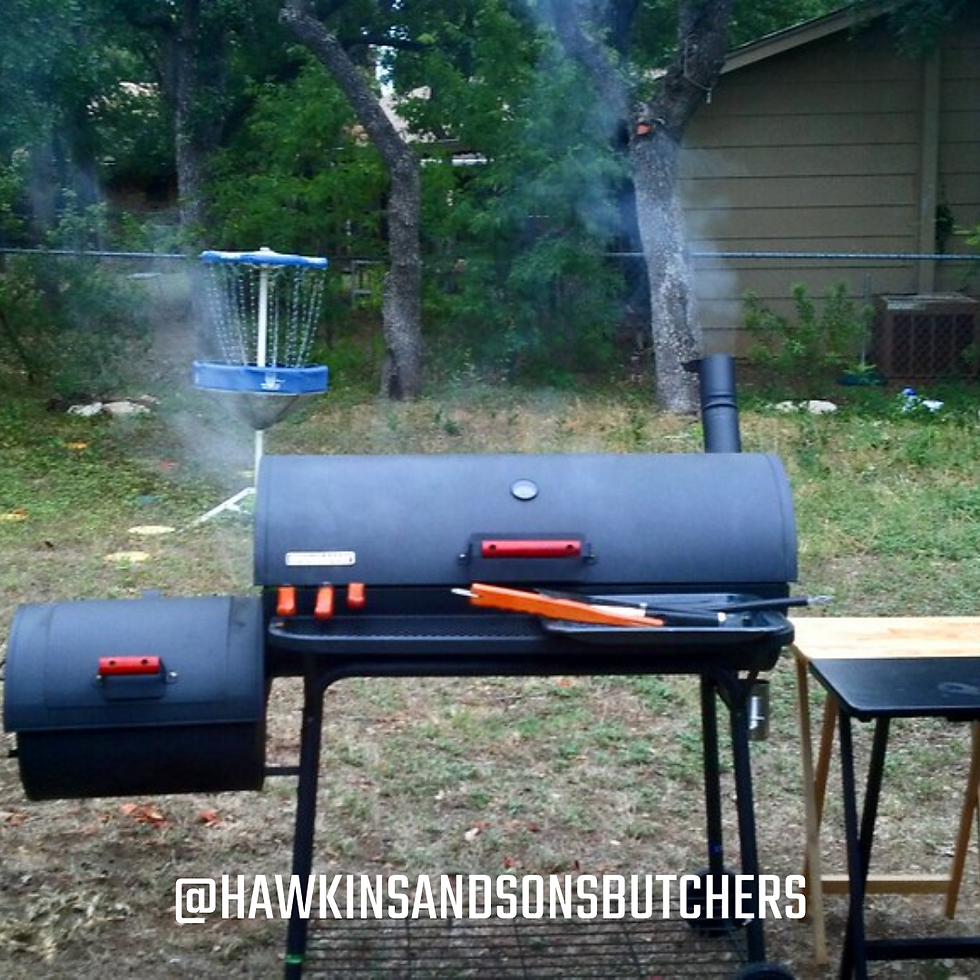Using your BBQ smoker!
- Paul Hawkins

- May 19, 2023
- 3 min read
Did you buy a BBQ with a smoker attached, or thinking of buying one? Not sure how to use it?
In this blog we (try!?) to help you understand how to prepare and use the smoker on your BBQ for some new flavours this summer! Whether you're a novice or seasoned griller, mastering the art of smoking meat can take your outdoor cooking to new heights.
Let's dive in!
Assuming you have what is known as an 'off set smoker' this blog will work for you - you have a BBQ with a smoker box attached to one side. The idea is that you cook your meat on the traditional BBQ part while in the box goes coals and the wood you choose to smoke your meat with. The wood creates the smoke and goes from the separate chamber into the main BBQ - flavouring the meat.
Part 1: Seasoning Your BBQ Smoker
Clean the smoker: Start by thoroughly cleaning the smoker, both inside and outside, using warm soapy water. Rinse it well to remove any residue or debris.
Apply oil: Once the smoker is clean and dry, lightly coat the interior surfaces, including the grates and walls, with cooking oil or high-heat oil. This helps create a protective layer and prevents food from sticking.
Preheat the smoker: Fire up your BBQ and smoker and preheat it to a medium temperature, around 250-275°F (121-135°C). Close the lid and allow the smoker to heat up for about 30 minutes to help the oil penetrate the metal.
Cool down and clean: After the preheating, let the smoker cool down completely. Then, using a brush or cloth, clean off any excess oil or debris.
Part 2: Setting Up and Using Your Smoker
Position the offset smoker: Find a suitable location for your offset smoker, preferably on a non-flammable surface and away from any overhanging structures. Ensure proper ventilation and clearance for smoke to dissipate.
Preparing the firebox: a). Open the firebox door: Begin by opening the door to the firebox, which is the smaller chamber attached to the side of the offset smoker. b). Remove ashes and debris: Clean out any leftover ashes or debris from previous use to allow for proper airflow.
Add charcoal or wood for fuel: a). Charcoal method: Place a layer of charcoal briquettes or lump charcoal in the firebox. Create a small mound or spread them evenly. b). Wood method: Arrange split logs or chunks of hardwood, such as oak, hickory, or fruitwood, in the firebox. Use a combination of smaller and larger pieces.
Ignite the fire: a). Light the charcoal: Use a chimney starter or fire starter cubes to ignite the charcoal. Once lit, wait until the coals have developed a thin layer of ash before transferring them to the firebox. b). Light the wood: If using wood as your primary fuel, use kindling or fire starters to ignite the wood logs or chunks. Allow the flames to catch and develop before closing the firebox door.
Control airflow and temperature: a). Adjust the dampers: Locate the intake and exhaust dampers on the offset smoker. Begin with the dampers fully open to allow for maximum airflow. b). Regulate temperature: Control the temperature by adjusting the dampers. Closing them partially will reduce airflow and lower the temperature, while opening them wider will increase airflow and raise the temperature.
Adding wood chips for smoke: a). Soak the wood chips: If you're using wood chips for additional smoke flavor, soak them in water for about 30 minutes to prevent them from burning too quickly. b). Place the wood chips: Once the fire is established, sprinkle a handful of soaked wood chips directly onto the hot coals or place them in a small metal smoker box. This will generate smoke that flavors the meat as it cooks.
Remember to monitor the temperature regularly, adjust the dampers as needed, and replenish the fuel and wood chips throughout the cooking process. With practice, you'll be able to achieve the desired smoke and temperature control for perfectly smoked meats.
Note: Experiment with different combinations of wood chips to achieve your desired flavor profile. Popular choices include hickory, mesquite, apple, cherry, or a blend of multiple woods.







Comments